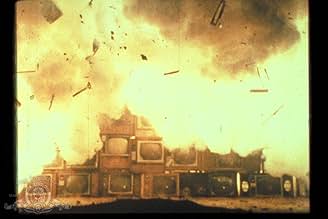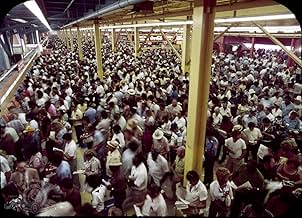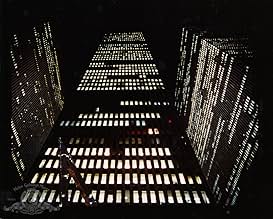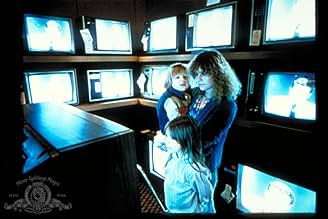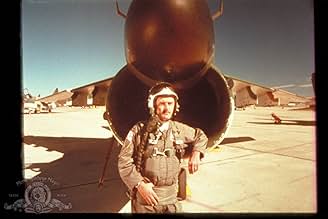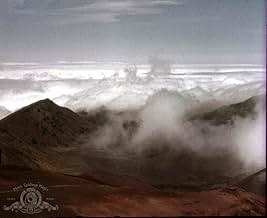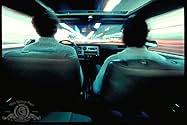Une collection de phénomènes habilement photographiés sans intrigue conventionnelle. Le film se concentre sur la nature, l'humanité et la relation entre les deux.Une collection de phénomènes habilement photographiés sans intrigue conventionnelle. Le film se concentre sur la nature, l'humanité et la relation entre les deux.Une collection de phénomènes habilement photographiés sans intrigue conventionnelle. Le film se concentre sur la nature, l'humanité et la relation entre les deux.
- Réalisation
- Scénario
- Casting principal
- Récompenses
- 6 victoires et 1 nomination au total
- Self - On TV
- (images d'archives)
- (non crédité)
- Self
- (images d'archives)
- (non crédité)
- Self - On TV
- (images d'archives)
- (non crédité)
- Self - On TV
- (images d'archives)
- (non crédité)
- Self - On TV
- (images d'archives)
- (non crédité)
- Self - On TV
- (images d'archives)
- (non crédité)
- Self - On TV
- (images d'archives)
- (non crédité)
- Self - On TV
- (images d'archives)
- (non crédité)
- Self - On TV
- (images d'archives)
- (non crédité)
- Self - On TV
- (images d'archives)
- (non crédité)
- Self - On TV
- (images d'archives)
- (non crédité)
- Self - On TV
- (images d'archives)
- (non crédité)
- Self - On TV
- (images d'archives)
- (non crédité)
- Self - On TV
- (images d'archives)
- (non crédité)
- Self - On TV
- (images d'archives)
- (non crédité)
Avis à la une
The images that are presented in the film are just beyond belief. The fantastic music score by that genius, Phillip Glass, compliments and enhances our experience. This film will live forever in spite of some of the comments submitted to this forum, because it deals with universal themes that will stay with us on this planet while human life will exist. This was pioneer movie making that later on became main stream. The originality being in the way the director presents the different sections in the film with some unusual photography that, while imitated, remains the standard for comparison with any new so called latest technique and innovation.
Kudos to Mr. Reggio, Mr. Glass and the people behind this gorgeous film.
The first half of Koyaanisqatsi is of a world full of beauty. The most memorable images for me are time-lapse photography of clouds and their shadows moving across the canyon-country landscapes of the desert southwest. Anyone who has spent hours gazing into a fire or watching waves at the beach will find the photography mesmerizing - one of few film experiences that convey natural beauty almost as well as the reality itself.
The second half of the film is an intentionally jarring contrast, starting with a depiction of mechanized destruction of the same beauty for human purposes, i.e. mining coal to produce electricity. The message soon becomes overwhelmingly plain: We are screwing the place up, and are immensely poorer for it. The sourpuss face of frustration and disgust on a woman vainly trying over and over again to light her cigarette with an empty lighter summed it up for me, although other viewers of any sensibility will find plenty of disturbing images from the second half of the film to identify with.
As my friends and I left the theater (sadly, this is one of those films that loses some of its impact on the small screen) one remarked "It's been done. They've made the movie I wanted to make". Some of the commentators here have basically said that, while Koyaanisqatsi is undoubtedly a very good film, they didn't like the message; one referred to people who would enjoy the movie as misanthropes.
While its opposite film, "My Dinner With Andre" was full of discussions about the unarguably wonderful meta-physical potential of sentient beings such as ourselves, and while I enjoyed it a great deal, the contrast between the two seemed to point out that we as a species really are rather full of ourselves at times. Whether one is inclined to agree, or just wishes to see a glimpse of another point of view, one cannot go wrong seeing Koyaanisqatsi. Like the Angel of Death silently pointing out to Ebaneezer Scrooge the error of his ways, this film's message IS unmistakable, and needs no words.
The best thing to do is to turn off all of the lights, pump up the sound and absorb yourself in the spectacle that unfolds on the screen. If you do this, you'll experience one of the most breathtaking, moving and exciting pieces of art ever. There are few films that reach these heights -- 2001: A Space Odyssey is the only one that instantly comes to mind.
Don't analyse it until it's finished. Talking through it will ruin it. I've found that the film works best on an emotional level so switch your brain off and just watch and listen. By the time it's finished, you'll feel like you've been on an exhausting and exhilarating journey that you'll want to take again not long afterwards.
one of the great things about this film is that while the intrusion of man is initially presented as profane and abhorrent, ultimately there is found a symmetry to the human experience that is as organic as anything found in the `natural' world. i used to be tempted to perceive humans as the only species on the plant that didn't fit, that threw everything out of balance, as it were. but over time it has become apparent that even the blight of man on earth is a naturally occurring phenomenon. the evolution of life is the destruction of life. the circle is unbroken.
So, Koyanisqaatsi. Boring junk to some, an involving masterpiece to others, and God knows what other adjective-noun combinations are out there (you can probably guess my opinion from the rating above). Most of these descriptions are fairly subjective, but it would definitely be wrong to regard Koyanisqaatsi as anti-cinema. It is anything but. Cinema, in its purest form, is a marriage of sound and visuals; everything else is just decoration. Dialogue? Storyline? Koyanisqaatsi harks back to an age when cinema was simply a filmed record of a situation. Was it not the Lumiere brothers who are generally regarded as the first pioneers of cinema? And is it not the case that their films comprised of nothing more than situations like a couple feeding their baby, workers leaving a factory, or the (in)famous Train Leaving A Station, which went down in folklore as causing people to flee the auditorium in panic thinking they were about to be hit by a train as it approached them on-screen? Koyanisqaatsi is cinema returning to its roots, to the days when the possibilities for film as an art form were wide open, free of commercial constraints and fickle audiences too narrow in scope to accept anything other than what they view as the given norm.
In a way it's fairly irrelevant what Koyanasqaatsi meant to me on a personal level, though I might get to that later. What's important is what Koyanasqaatsi represents. It's an interesting attempt (and a successful one in my view) to illustrate how a narrative can be created simply by editing together seemingly loosely related scenes and images. It reminds me of another cinematic milestone, the Kuleshov experiment, in which two separate images where edited together to create a third meaning, and which helped establish what is now known as Russian montage (and speaking of the Russian montage tradition, anyone who has seen Vertov's The Man With The Movie Camera will no doubt find traces of it in Koyanisqaatsi and vice versa). Koyanisqaatsi takes it one step further, perhaps even to its logical conclusion, using editing to create a new meaning for the entire narrative as a whole. It works on a gut level and sparks an emotional response, in a way it demands a response, be it boredom, amazement... it really depends on the person (as illustrated by the Reggio quote above). As such it's an example of cinema at its most subjective.
Coming back to the influence Man With A Movie Camera no doubt had on this film, I think what Godfrey Reggio has done here is take this specific style of film-making and turn it into what I, personally, view as a cinematic statement on humanity- and our technology's relationship with the environment around us. It's a pessimistic film, filled with Cold War anxiety (though it hasn't lost any of its relevance) - and in retrospect, I also found it reminiscent of an age when America still had a strong avantgarde movement in the shape of people like Reggio or Laurie Anderson (and in a way it's an interesting coincidence that 1983 also gave birth to another experimental documentary, Chris Marker's Sans Soleil, which is equally rich in scope and tackles the same philosophical issues, albeit from a slightly different angle).
I really wonder if the western world could produce a film like this today, in an age where cinema audiences are more fickle than ever, demanding a cut every three seconds and some sort of "surprise twist" at the end, with hardly a niche left for the Godrey Reggios of this world. But in a way I suppose it doesn't really matter. Koyanisqaatsi, to me at least, is one of the richest cinematic experiences anyone could possibly hope to have, and I doubt I'll see a film which will move me quite like this for a long time to come.
Le saviez-vous
- AnecdotesGodfrey Reggio was hooked on Philip Glass doing the music. He approached Glass through a mutual friend, and Glass replied, "I don't do film music." Reggio persisted, and finally the friend told Glass that the tenacious guy was not going to go away without at least an audience. Glass relented, though he still insisted he wasn't doing the music. Reggio put together a photo montage with Glass' music as the soundtrack, which he presented to Glass at a private screening in New York. Immediately following the screening, Glass agreed to score the film.
- GaffesThe two explosions at about 18 minutes into the film were shot with anamorphic lenses and not properly desqueezed for the film's 1.85:1 aspect ratio.
- Citations
[last lines]
title card: Translation of the Hopi Prophecies sung in the film: "If we dig precious things from the land, we will invite disaster." - "Near the Day of Purification, there will be cobwebs spun back and forth in the sky." - "A container of ashes might one day be thrown from the sky, which could burn the land and boil the oceans."
- Crédits fousEnd credits go over mashed voice recordings in English ranging from call operator answers to television news.
- ConnexionsEdited into Wide Awake (2006)
Meilleurs choix
Détails
- Date de sortie
- Pays d’origine
- Site officiel
- Langues
- Aussi connu sous le nom de
- Koyaanisqatsi
- Lieux de tournage
- San Onofre Nuclear Generating Station, San Diego County, Californie, États-Unis(as seen from San Onofre State Beach)
- Sociétés de production
- Voir plus de crédits d'entreprise sur IMDbPro
Box-office
- Montant brut aux États-Unis et au Canada
- 1 723 872 $US
- Montant brut mondial
- 1 728 699 $US
Contribuer à cette page



